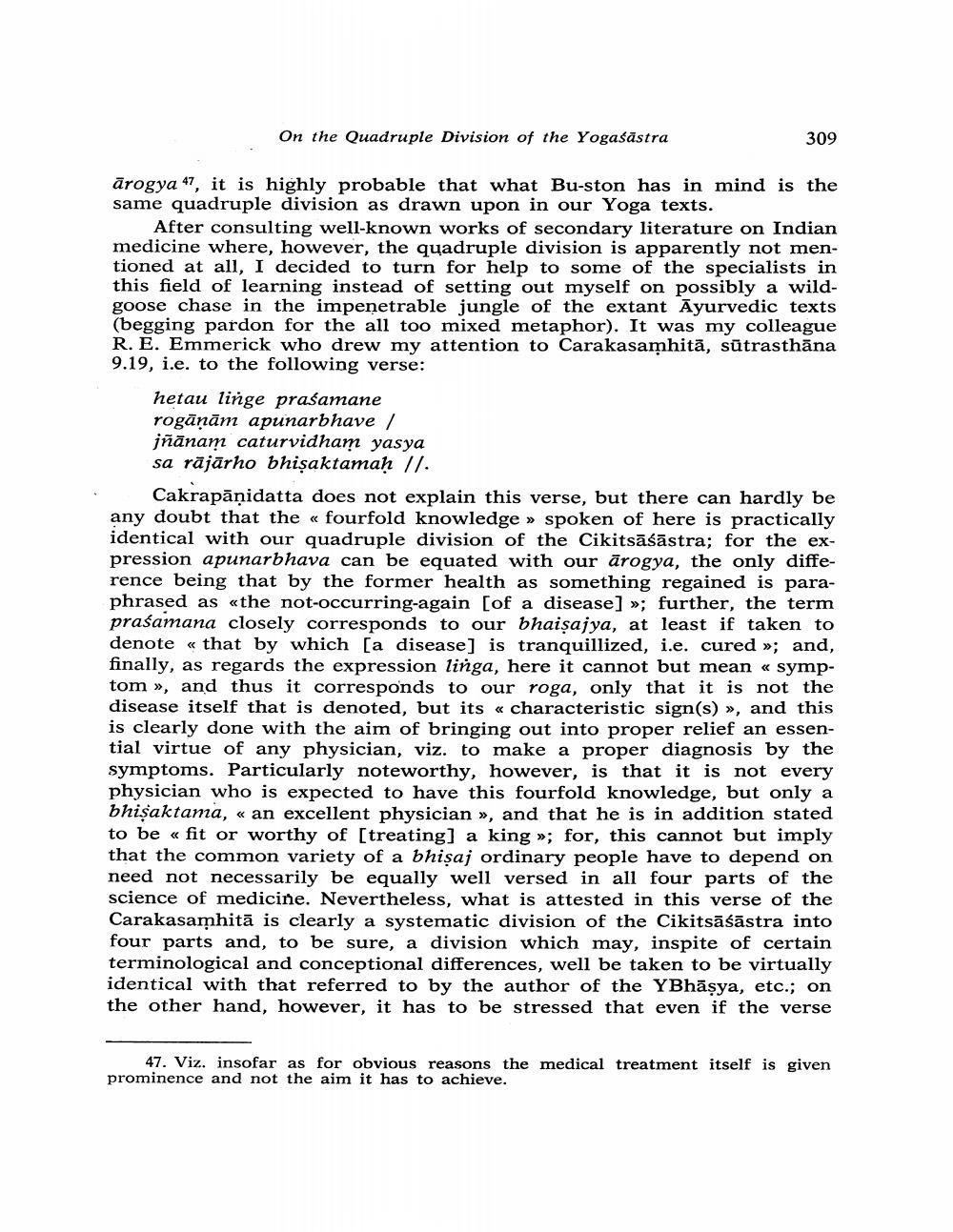________________
On the Quadruple Division of the Yogaśāstra
309
ārogya 47, it is highly probable that what Bu-ston has in mind is the same quadruple division as drawn upon in our Yoga texts.
After consulting well-known works of secondary literature on Indian medicine where, however, the quadruple division is apparently not mentioned at all, I decided to turn for help to some of the specialists in this field of learning instead of setting out myself on possibly a wildgoose chase in the impenetrable jungle of the extant Ayurvedic texts (begging pardon for the all too mixed metaphor). It was my colleague R. E. Emmerick who drew my attention to Carakasamhitā, sūtrasthāna 9.19, i.e. to the following verse:
hetau linge praśamane rogānām apunarbhave / jñānam caturvidham yasya sa rājārho bhișaktamaḥ //.
Cakrapāņidatta does not explain this verse, but there can hardly be any doubt that the « fourfold knowledge » spoken of here is practically identical with our quadruple division of the Cikitsāśāstra; for the expression apunarbhava can be equated with our ārogya, the only difference being that by the former health as something regained is paraphrased as «the not-occurring-again [of a disease]»; further, the term praśamana closely corresponds to our bhaisajya, at least if taken to denote « that by which [a disease] is tranquillized, i.e. cured »; and, finally, as regards the expression linga, here it cannot but mean « symptom », and thus it corresponds to our roga, only that it is not the disease itself that is denoted, but its « characteristic sign(s) », and this is clearly done with the aim of bringing out into proper relief an essential virtue of any physician, viz. to make a proper diagnosis by the symptoms. Particularly noteworthy, however, is that it is not every physician who is expected to have this fourfold knowledge, but only a bhisaktama, « an excellent physician », and that he is in addition stated to be « fit or worthy of [treating] a king »; for, this cannot but imply that the common variety of a bhişaj ordinary people have to depend on need not necessarily be equally well versed in all four parts of the science of medicine. Nevertheless, what is attested in this verse of the Carakasamhitā is clearly a systematic division of the Cikitsāśāstra into four parts and, to be sure, a division which may, inspite of certain terminological and conceptional differences, well be taken to be virtually identical with that referred to by the author of the YBhāşya, etc.; on the other hand, however, it has to be stressed that even if the verse
47. Viz. insofar as for obvious reasons the medical treatment itself is given prominence and not the aim it has to achieve.




